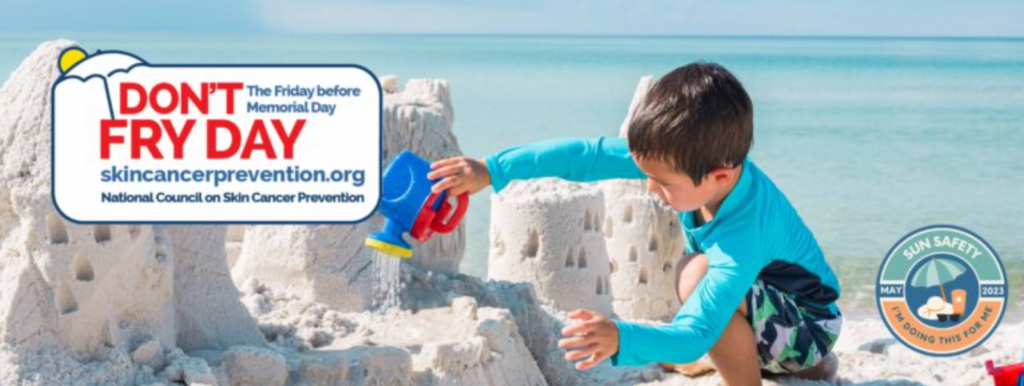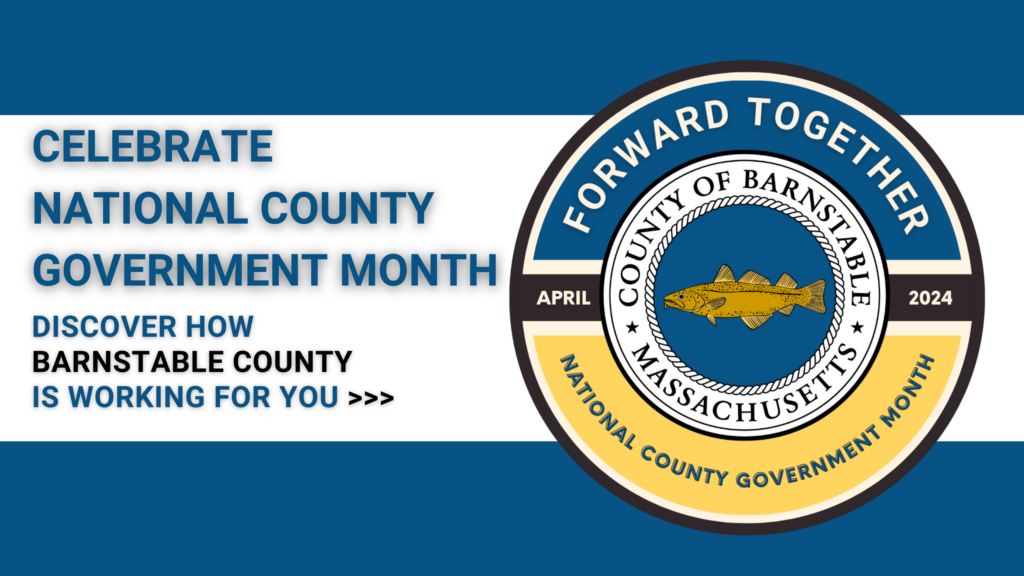
National “DON’T Fry Day”

The National Council on Skin Cancer Prevention has designated today, the Friday before Memorial Day, as “Don’t Fry Day” to encourage sun safety awareness and remind everyone to protect their skin while enjoying the outdoors.
Sun safety awareness is particularly important on Cape Cod where sunshine and beaches have a dark side. According to Blue Cross Blue Shield Association’s Health of America Report, the rate of skin cancer diagnoses in the Barnstable-Yarmouth Metropolitan Statistic Area is double the national average.
Skin cancer is the most common cancer in the United States: Nearly 9,500 people in the U.S. are diagnosed with it each day, according to the American Academy of Dermatology. And while skin cancer is a major public health problem, it’s also highly preventable.
Individuals can take steps to reduce their risk of developing skin cancer. Sun protection helps prevent the harmful effects of sun exposure, including sunburn, skin cancer, premature skin aging, and eye damage.
Here are some sun safety tips from the Centers for Disease Control and Prevention:
How to Protect Your Skin from the Sun
Shade
You can reduce your risk of sun damage and skin cancer by staying in the shade under an umbrella, tree, or other shelter. Your best bet to protect your skin is to use sunscreen or wear protective clothing when you’re outside—even when you’re in the shade.
Clothing
When possible, wear long-sleeved shirts and long pants and skirts, which can provide protection from UV rays. If wearing this type of clothing isn’t practical, try to wear a T-shirt or a beach cover-up. Clothes made from tightly woven fabric offer the best protection. A wet T-shirt offers much less UV protection than a dry one, and darker colors may offer more protection than lighter colors. Some clothing is certified under international standards as offering UV protection.
Hat
For the most protection, wear a hat that has a brim all the way around that shades your face, ears, and the back of your neck. A tightly woven fabric, such as canvas, works best to protect your skin from UV rays. Avoid straw hats with holes that let sunlight through. A darker hat may offer more UV protection.
If you wear a baseball cap, you should also protect your ears and the back of your neck by wearing clothing that covers those areas, using sunscreen, or staying in the shade.
Sunglasses
Sunglasses protect your eyes from UV rays and reduce the risk of cataracts. They also protect the tender skin around your eyes from sun exposure.
Sunglasses that block both UVA and UVB rays offer the best protection. Most sunglasses sold in the United States, regardless of cost, meet this standard. Wrap-around sunglasses work best because they block UV rays from sneaking in from the side.
Sunscreen
Put on broad spectrum sunscreen that filters out both UVA and UVB rays and has an SPF of 15 or higher before you go outside. Don’t forget to put a thick layer on all exposed skin. Get help for hard-to-reach places like your back. And remember, sunscreen works best when combined with other options.
Sunscreen is not recommended for babies who are 6 months old or younger. The U.S. Food and Drug Administration recommends keeping infants out of the sun during midday and using protective clothing if they have to be in the sun.
SPF. Sunscreens are assigned a sun protection factor (SPF), which is a number that rates how well they filter out UV rays. Higher numbers indicate more protection. You should use a broad spectrum sunscreen with SPF of 15 or higher.
Reapplication. Sunscreen wears off. Put it on again if you stay out in the sun for more than 2 hours and after swimming, sweating, or toweling off.
Expiration date. Check the sunscreen’s expiration date. Sunscreen without an expiration date has a shelf life of no more than 3 years. Its shelf life is shorter if it has been exposed to high temperatures.
Additional Sun Safety Resources
Surgeon General Call to Action to Prevent Skin Cancer: Exec Summ | HHS.gov
Skin Cancer Prevention : National Council on Skin Cancer Prevention
Sun Safety | Skin Cancer | CDC
Skin Cancer Shareable Graphics | CDC
Melanoma of the Skin Statistics | CDC
What CDC Is Doing About Skin Cancer | CDC



